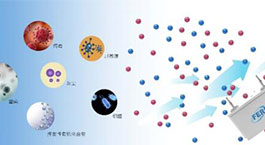 Your current location: Home > Technical Support > Popular Science Column > Fermion's 100 Q...
Your current location: Home > Technical Support > Popular Science Column > Fermion's 100 Q... Depending on the material, there are generally the following types of screws:
Stainless steel screws are the most common, but because many of them are magnetic, especially at low temperatures, the magnetism will be significantly enhanced, affecting the test experiment, so our low-temperature products cannot use this type of screws.
Mo screws, Mo is generally used as a high-temperature material, and is also used on our sample rack. The advantage is that it is non-magnetic and has a high thermal conductivity (138W/m•K); the disadvantage is that Mo is brittle and easy to break. In addition, Mo is not suitable for high-temperature oxidation environments. If there is O above 500 ℃, Mo will oxidize into molybdenum oxide and then continue to sublimate.
Ta screws, Ta is generally used as a high-temperature material, and its processing performance is similar to that of stainless steel, and it is corrosion-resistant. The disadvantage is that it is relatively expensive (the price of high-purity Ta is close to 10,000 yuan per kilogram), and in addition, the thermal conductivity is not very good (57.5 W/m•K).
Copper screws, note that this is definitely not pure copper, because the basic requirement for screw materials is hardness, so it is not feasible to make screws with oxygen-free copper, which will break after a few uses. The same is true for pure aluminum.
In addition, the screws we encountered are:
PEEK screws, this is a screw used for insulation, which is slightly weaker than metal in strength, but stronger than metal in toughness.
Titanium screws, this is also a common vacuum screw, but the thermal conductivity of Ti is the worst among metals (21.9 W/m•K). If used in a low-temperature environment, the temperature of titanium screws will cool down relatively slowly, which may cause a lag in the overall temperature rise and fall.
In addition, generally for special occasions, it is best to have different materials for screws and nuts, because our use environment is a vacuum. In a vacuum, because the interface is very simple and there is no lubrication, there is a possibility of "cold welding" of the same material, that is, the same material will stick together. If it is a different material, it will be much better.
For this problem, we must be clear that the choice of screws is limited according to the application. For example, stainless steel screws cannot be used in low temperature environments. The poor thermal conductivity of Ta/Ti and PEEK may affect the extremely low temperature index. If the screws are non-replaceable, the uncertainty of thread brittleness and other uncertainties are very large if Mo is used. Therefore, beryllium copper or phosphor bronze screws are currently the best choice. If you want to avoid cold welding, you can add solid lubrication at the interface, such as MoS2, to prevent the two copper interfaces from overlapping.
17. Why do screws used in blind holes need to have vent holes?
Some air will remain between the screw and the bottom of the blind hole. Under vacuum conditions, the air release speed through the screw seam is very slow. If the air release hole is not drilled, these gases will be difficult to discharge and will affect the system vacuum.
18. Can pure aluminum be used for metal sealing gaskets?
In fact, pure aluminum gaskets exist and are used in large quantities (mainly in the industrial field), please refer to Lesker's website:(https://www.lesker.com/newweb/flanges/hardware_cf_gaskets.cfm?pgid=aluminum)



